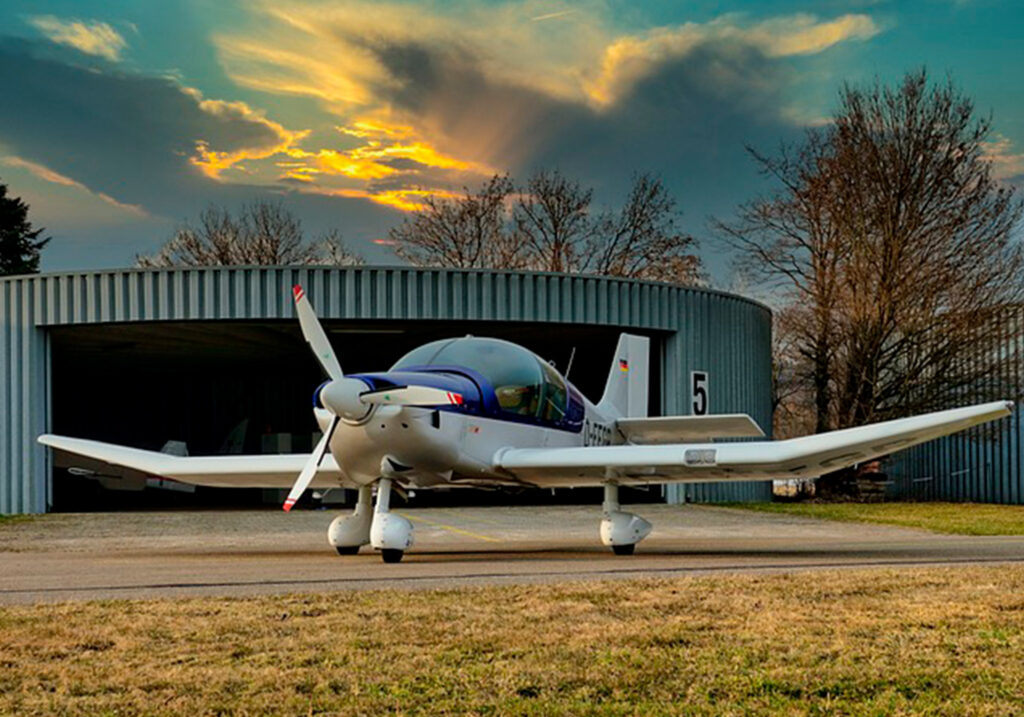If you do not belong to the airline industry, you most probably do not see aircraft hangars all the time. To many of us, they just loom in the background; some do not even realize these structures exist are essentially a part of their lives too.
Aircraft hangars are essential structures designed to protect valuable aircraft from environmental factors, ensure maintenance operations, and provide secure storage. When considering the materials for constructing these hangars, steel emerges as the most logical choice. The benefits of using steel for aircraft hangars span from durability and cost-effectiveness to design flexibility and environmental sustainability.
This article delves into the various reasons why steel is the preferred material for building aircraft hangars.
Durability and Strength
One of the primary reasons for choosing steel in aircraft hangar construction is its unmatched durability and strength. Aircraft are significant investments, and protecting them from environmental threats such as wind, rain, snow, and UV rays is crucial. Steel’s inherent strength provides robust protection against these elements, ensuring that the hangar can withstand severe weather conditions, including hurricanes and heavy snow loads. This level of resilience makes steel hangars a preferred choice for locations prone to extreme weather, offering peace of mind to aircraft owners.
In addition to its weather-resistant properties, steel is also impervious to pests like termites and rodents, which can compromise the structural integrity of hangars made from wood or other materials. Unlike wood, which can decay or become infested over time, steel maintains its integrity, providing a long-lasting solution for aircraft storage. This resistance to biological threats further enhances the reliability of steel hangars, ensuring they remain secure and intact for years to come.
Furthermore, steel does not warp, crack, or split over time, which means the hangar will maintain its structural integrity for decades with minimal maintenance. This stability is particularly important in maintaining a safe environment for aircraft, as structural deformities can pose risks to both the aircraft and personnel. The combination of durability, pest resistance, and minimal maintenance makes steel an ideal material for constructing aircraft hangars.
Cost-Effectiveness
While the initial cost of steel might be higher compared to other materials, the long-term savings make it a cost-effective option. Steel hangars require less maintenance over time, reducing repair costs significantly. The longevity of steel structures means that they do not need to be replaced or renovated as frequently as those made from less durable materials. This extended lifespan translates into considerable savings, making steel an economically sound choice for aircraft hangar construction.
Additionally, steel components can be prefabricated off-site, which reduces construction time and labor costs. Prefabrication allows for precise manufacturing, ensuring that all components fit together seamlessly during assembly. This efficiency not only minimizes construction errors but also accelerates the building process, allowing aircraft owners to have their hangars operational in a shorter timeframe. The faster construction timeline not only saves money but also allows aircraft owners to utilize their hangars sooner, providing an immediate return on investment.
Moreover, steel’s energy efficiency can contribute to further cost savings. Steel buildings can be easily insulated to improve temperature regulation, reducing heating and cooling expenses. This energy efficiency, combined with lower maintenance and repair costs, makes steel hangars a financially prudent investment in the long run. By choosing steel, aircraft owners benefit from a durable, low-maintenance, and cost-effective solution for their storage needs.
Design Flexibility
Steel’s versatility allows for a wide range of design possibilities. Whether you need a small hangar for personal aircraft or a large facility for commercial aviation operations, steel can accommodate various sizes and configurations. The clear-span design capability of steel structures means that large, unobstructed interior spaces are possible, providing ample room for aircraft storage and maintenance without the need for internal support columns.
Moreover, steel hangars can be easily expanded or modified as needs change. This adaptability is particularly beneficial for growing aviation businesses or private owners who may acquire additional aircraft in the future. Customization options, including insulation, ventilation, and specialized doors, further enhance the functionality and comfort of steel hangars.
Environmental Sustainability
Sustainability is an increasingly important factor in construction decisions, and steel is one of the most environmentally friendly building materials available. Steel is 100% recyclable, and many steel hangars are constructed using recycled materials. This reduces the environmental impact of construction and supports sustainable building practices.
Furthermore, steel’s durability means that hangars have a longer lifespan, reducing the need for frequent rebuilds and conserving resources. Energy-efficient insulation and reflective roofing options can also be incorporated into steel hangar designs, lowering energy consumption and operational costs.
Fire Resistance and Safety
Safety is paramount in any aviation facility, and steel offers superior fire resistance compared to other building materials. Steel does not ignite or contribute to the spread of fire, providing an added layer of protection for the valuable aircraft stored within. This fire-resistant property can also lead to lower insurance premiums, offering additional financial benefits.
In addition to fire resistance, steel hangars can be designed to meet stringent safety standards and regulations. Features such as reinforced doors, secure locking mechanisms, and advanced alarm systems can be integrated seamlessly into the structure, ensuring both the aircraft and personnel are well-protected.
Low Maintenance Requirements
Another significant advantage of steel hangars is their low maintenance requirements. Unlike wood, which can rot or require regular painting and sealing, steel is resistant to corrosion when properly treated and coated. Modern steel treatments, such as galvanization and powder coating, provide long-lasting protection against rust and environmental wear.
Routine maintenance for steel hangars typically involves simple inspections and minor touch-ups, making them a hassle-free option for busy aircraft owners and operators. This ease of maintenance translates to lower long-term costs and more time focused on aviation activities rather than building upkeep.
Speed of Construction
The speed at which steel hangars can be constructed is another compelling reason for their popularity. Prefabricated steel components are manufactured off-site to precise specifications, allowing for quick assembly once delivered to the construction site. This streamlined process significantly reduces construction time compared to traditional building methods.
Faster construction not only means quicker access to the hangar but also minimizes disruptions to surrounding operations and reduces labor costs. For commercial aviation businesses, this speed can translate to increased operational efficiency and revenue generation.
Versatility in Use
Steel hangars are not limited to just aircraft storage. Their versatile design makes them suitable for a variety of uses, including maintenance facilities, workshops, office spaces, and even living quarters for pilots and staff. The ability to customize the interior layout to meet specific needs adds to the practicality and appeal of steel hangars.
This multi-functionality ensures that the hangar can adapt to changing requirements over time, whether for personal, commercial, or military applications. The robust nature of steel construction also means that these hangars can support heavy equipment and machinery, further broadening their utility.
Enhanced Security Features
Security is a critical consideration for any aircraft hangar, and steel structures offer superior protection against unauthorized access and theft. The strength of steel makes it difficult for intruders to breach the building, and advanced security systems can be integrated into the design.
Steel hangars can be equipped with features such as reinforced doors, surveillance cameras, motion detectors, and alarm systems to ensure comprehensive security. These measures not only protect the aircraft but also provide peace of mind for owners and operators.
Weather Resistance
Steel hangars are designed to withstand a wide range of weather conditions, from extreme heat and cold to high winds and heavy precipitation. The structural integrity of steel ensures that the hangar remains safe and functional regardless of the climate.
Special coatings and treatments can enhance the weather resistance of steel, preventing corrosion and extending the lifespan of the hangar. Additionally, steel’s non-combustible nature provides added protection against lightning strikes and fire hazards associated with severe weather events.
Compliance with Aviation Standards
Building an aircraft hangar involves adhering to specific aviation standards and regulations. Steel hangars can be designed to meet these stringent requirements, ensuring compliance with local, national, and international guidelines.
From fire safety codes to environmental regulations, steel hangars can be customized to satisfy all necessary criteria. This compliance not only ensures the safety and functionality of the hangar but also simplifies the permitting and approval process.
Conclusion
The decision to build aircraft hangars from steel is supported by a multitude of advantages, including durability, cost-effectiveness, design flexibility, and environmental sustainability. Steel’s superior strength and resistance to environmental factors make it an ideal material for protecting valuable aircraft, while its low maintenance requirements and quick construction timeline provide practical and financial benefits.
Whether for personal, commercial, or military use, steel hangars offer a versatile and reliable solution that can be customized to meet a wide range of needs. The long-term benefits of steel construction, from enhanced security and safety to energy efficiency and sustainability, make it the smart choice for modern aviation infrastructure.

